1
The D-Day invasion on June 6, 1944, was the turning point in the war. The Allied forces successfully landed on the beaches at Normandy and began to move into France, Belgium and Holland. One of the reasons the landing was successful was the Allied Forces' use of radar.Earlier in the war, the Allies had found out a great deal about the German radar systems. In the weeks leading up to D-Day they used this information to their advantage. They used electronic jamming to disrupt the German radar stations on the Normandy Coast, as well as Fighter Direction Tenders (FDTs). Truck convoys carried mobile radar units onto the continent, including mobile OBOE units (also known as AMES Type 9000).
2
The station logbook shows that Les Brown was on duty during the D-day invasions6 June 1944
 Credits:
Credits:Private Collection
Courtesy of J.L. Brown
3
Called "window", "chaff" or "duppel", strips of metallic foil were used to jam enemy radar1940 to 1946
 Credits:
Credits:The Secrets of Radar Museum
4
Understanding how radio waves work is important when locating objects with radar1940-1945
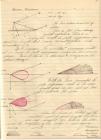 Credits:
Credits:The Secrets of Radar Museum
Charles W. Young Collection
5
Men and women worked side-by-side as radar operators, tracking the incoming aircraftWorld War II
Unknown Location
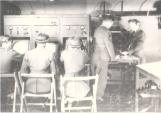 Credits:
Credits:RAF Photograph
The Secrets of Radar Museum Archives
6
Instructional flashcards give an example of how to track aircraft over the North Sea.1940-1946
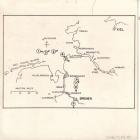 Credits:
Credits:RAF Training tool
The Secrets of Radar Museum
Stan Kostashuk Collection
7
First of a set of flashcards demonstrating how to interpret the radar screens1940-1945
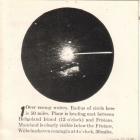 Credits:
Credits:RAF Training tool
The Secrets of Radar Museum
Stan Kostashuk Collection
8
Second of nine flashcards demonstrating how to track aircraft over the North Sea1940-1945
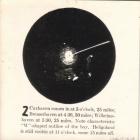 Credits:
Credits:RAF Training tool
The Secrets of Radar Museum
Stan Kostashuk Collection
9
This flashcard clearly shows the coastline as the plane approaches Germany.1940-1945
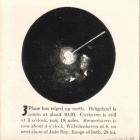 Credits:
Credits:RAF Instructional tool
The Secrets of Radar Museum
Stan Kostashuk Collection
10
OBOE originally used two ground stations, code named "cat" and "mouse", to guide a single aircraft to its target. This plane (usually a Mosquito bomber) would guide a large number of heavy bombers (such as Lancaster bombers). Both radar mechanics and WAAF operators worked on these ground stations. OBOE was used to guide bombers to their targets, and was accurate to within 100 meters up to 400km away! Later, OBOE was also mobile and was brought onto the continent in truck convoys on D-Day. Its accuracy was also useful after the liberation of areas such as the Netherlands, when many people were without access to food and water. Operation Manna used OBOE radar to coordinate the dropping of food and supplies directly to the areas that needed them most.11
A rail yard thought to store German munitions prior to a bombing raid led by OBOE radarca. 1944
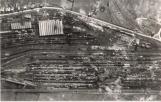 Credits:
Credits:Royal Air Force Photograph
The Secrets of Radar Museum Archives
Jan Bates Collection
12
The same rail yard a short time later shows how accurate and deadly the bombing raids could be.ca. 1944
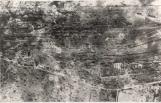 Credits:
Credits:Royal Air Force Photograph
The Secrets of Radar Museum Archives
Jan Bates Collection
13
RAF Form 1629, Mechanical Transport Drivers ID card issued to K.E. Wells to drive trucks in convoy1944 to 1945
 Credits:
Credits:Private Collection
Courtesy of K.E. Wells
14
Large trucks helped bring men and equipment further into Europe after D-day1944-1945
Heidelberg, Germany
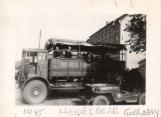 Credits:
Credits:Private Collection
Courtesy of K.E. Wells